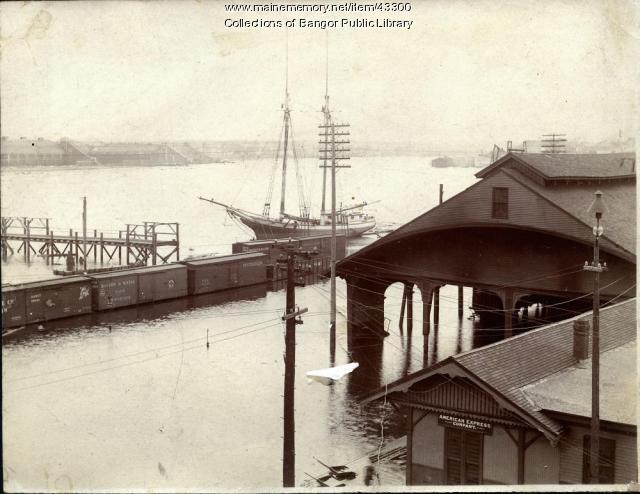Keywords: Rail workers
Item 22830
Train Loading Ballast Near Springvale Depot, ca. 1905
Contributed by: Sanford-Springvale Historical Society Date: circa 1905 Location: Sanford Media: Print from glass negative
Item 29143
![]() Where? Who?
Where? Who?
Contributed by: Kennebunkport Historical Society Date: circa 1897 Media: Photographic print
Exhibit
Construction of the Bangor and Aroostook rail lines into northern Aroostook County in the early twentieth century opened the region to tourism and commerce from the south.
Exhibit
History in Motion: The Era of the Electric Railways
Street railways, whether horse-drawn or electric, required the building of trestles and tracks. The new form of transportation aided industry, workers, vacationers, and other travelers.
Site Page
Scarborough: They Called It Owascoag - Historical Overview - Page 3 of 4
"There was great excitement that July when the rails of the Biddeford and Saco Railroad Company were finally connected to those of the Portland…"
Site Page
Scarborough: They Called It Owascoag - Historical Overview - Page 2 of 4
"However, diking and development of roads and rail lines across the marsh negatively impacted the marsh, destroying soils and natural vegetation."









